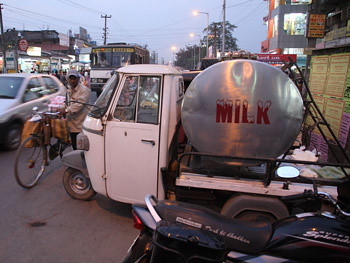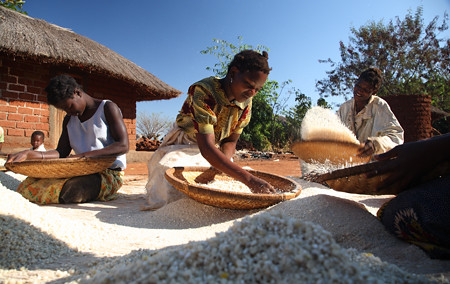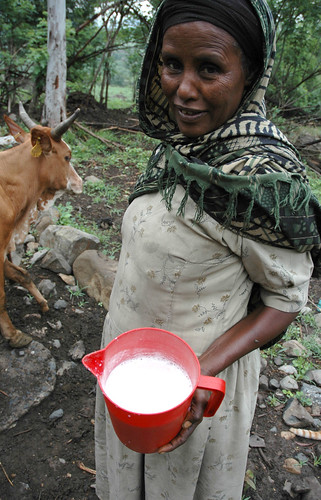Small-scale pig production and marketing play important roles in contributing to the livelihoods of poor tribal populations that live in Northeast India.
A 2008 study by the International Livestock Research Institute (ILRI) characterized the pig sub-sector in Nagaland, Northeast India and found that the region is home to over a quarter of India's total pig population. Here, 80-90% of tribal communities keep 2-3 pigs, mostly under traditional production systems.
However, the traditional methods of pig production are constrained by lack of management inputs like quality feeds and preventive animal health services. This often leads to low productivity and poor quality of pork products.
Towards improving the quality of pig production and marketing, ILRI's Asia Office and Capacity Strengthening Unit joined hands with national research partners in India to develop three training manuals on smallholders' pig management, veterinary first aid for pigs, and hygienic pork production and marketing.
The manuals are aimed at enhancing the capacity of pig producers, veterinary practitioners and pork traders, respectively, to transform subsistence pig production into small-scale commercial farming that satisfies growing consumer demand for quality and safety.
"It is expected that the implementation of training programs based on these manuals will help to improve productivity and provision of animal health care, and build knowledge and awareness on hygienic pork selling which in turn will improve profitability and livelihoods of smallholder pig producers and pork traders," said Dr Purvi Mehta Bhatt, Head of ILRI's Capacity Strengthening Unit.
A 2008 study by the International Livestock Research Institute (ILRI) characterized the pig sub-sector in Nagaland, Northeast India and found that the region is home to over a quarter of India's total pig population. Here, 80-90% of tribal communities keep 2-3 pigs, mostly under traditional production systems.
However, the traditional methods of pig production are constrained by lack of management inputs like quality feeds and preventive animal health services. This often leads to low productivity and poor quality of pork products.
Towards improving the quality of pig production and marketing, ILRI's Asia Office and Capacity Strengthening Unit joined hands with national research partners in India to develop three training manuals on smallholders' pig management, veterinary first aid for pigs, and hygienic pork production and marketing.
The manuals are aimed at enhancing the capacity of pig producers, veterinary practitioners and pork traders, respectively, to transform subsistence pig production into small-scale commercial farming that satisfies growing consumer demand for quality and safety.
"It is expected that the implementation of training programs based on these manuals will help to improve productivity and provision of animal health care, and build knowledge and awareness on hygienic pork selling which in turn will improve profitability and livelihoods of smallholder pig producers and pork traders," said Dr Purvi Mehta Bhatt, Head of ILRI's Capacity Strengthening Unit.





